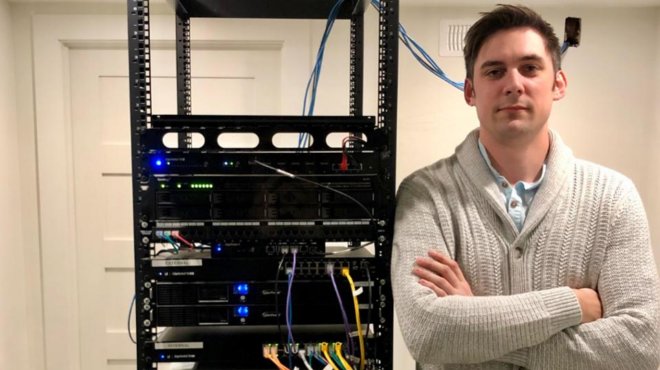
Predicting cyberattacks from a Nova Scotia basement
Jason Hopper (BSc’14) and his team at Hyperion Gray submitted a tool to help predict cyberattacks to a US national intelligence initiative. The software research scientist manages the data centre for Omnisense from his Nova Scotia basement.
—
What if you could be warned about a scam email even before it arrived in your inbox? And what if you could be told exactly what it would say and what it would do to you and your computer?
Back in 2015, the Intelligence Advanced Research Projects Activity (IARPA), a research unit within the Office of the Director of National Intelligence, issued a call for anyone who could come up with novel, efficient ways to predict cyberattacks before they happened. It sought tech that made those predictions way ahead of other available products. And, not only did IARPA want technology that could see an attack coming, it wanted the details ahead of time too, such as what vulnerabilities would be exploited and what digital weapons would be used.
This March, the project comes to a close and yet little has emerged about the success of the project, dubbed CAUSE, a neat acronym for the Cyberattack Automated Unconventional Sensor Environment initiative.
But one of the teams involved the program spoke to Forbes about a tool, OmniSense, they built for the CAUSE project with the University of Southern California. Managed from a data center, or “mothership,” installed in the basement of Hyperion Gray software research scientist Jason Hopper’s Nova Scotia, Canada, home, Omnisense watches over the internet all the time.
Read more in “Omnisense: U.S. Intelligence-Backed Startup Claims It Can Predict Cyberattacks Days Before They Happen” by Thomas Brewster on forbes.com.